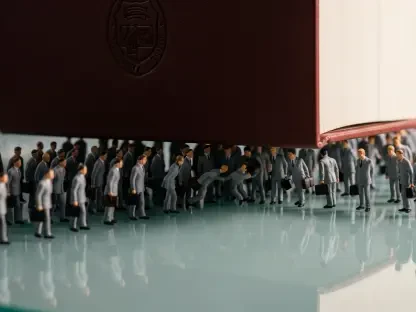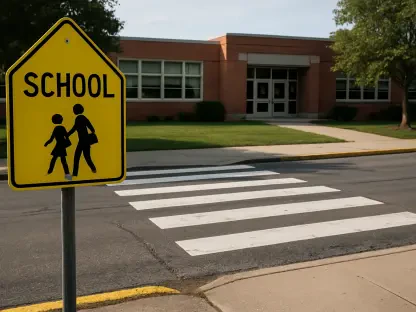The recent legislative enactment of a $200,000 cap on federal loans for professional degrees, including those from medical schools, is poised to significantly alter the landscape of medical education in the United States. This policy shift introduces a complex web of challenges, primarily centered around the heightened financial burden it imposes on prospective medical students. As education costs continue to surge, concerns mount that the cap may act as a deterrent, discouraging many from pursuing their ambitions in medicine. For those daring enough to undertake the journey, the restriction may steer them toward more lucrative specialties, sidelining primary care disciplines that are crucial for maintaining a balanced healthcare system. The implications of this cap extend beyond individual financial strain, potentially affecting diversity within the medical community and accessibility to essential healthcare services. Such changes pose significant questions about the future of American medicine, as the pursuit of profit threatens to overshadow the intrinsic motivations of patient care.
Rising Costs and Student Struggles
For medical students navigating the financial hurdles inherent in obtaining their degrees, the new federal loan cap is a formidable obstacle. The example of Marshall Biven, a second-year student at Creighton University, is emblematic of the wider challenges. He anticipates approximately $400,000 in federal loan debt upon graduating, underscoring the stark reality that the $200,000 cap falls far short of covering the necessary costs of medical education. Although Biven is not directly impacted by this cap, given the timing of its implementation, his efforts to raise awareness highlight growing concern among the academic community. Students fear that without sufficient federal support, they will be forced to resort to private loans. These alternatives, bearing prohibitively high interest rates, some exceeding 17%, will drive students into financial distress. This predicament stands to disadvantage lower-income students disproportionately, as they find themselves trapped in a cycle of debt that even substantial post-graduation salaries may not adequately mitigate.
The broader repercussions of this financial restriction are significant and far-reaching. By hampering access to attainable loans, aspiring physicians from diverse economic backgrounds may find themselves excluded from the profession altogether. This raises concerns about the homogenization of the medical field as it becomes increasingly dominated by those with the wealth or means to absorb these costs. As middle and lower-income students face these insurmountable financial barriers, the diversity and richness of perspectives they bring to healthcare may be lost. In this context, the potential decline in healthcare accessibility and comprehensiveness is more pronounced, risking the marginalization of regions already beset by a shortage of practitioners. Thus, the loan cap emerges not merely as a financial policy change but as a broader threat to the equitable distribution of healthcare resources and services, endangering communities that depend on a diverse and representative healthcare workforce.
Policy Justifications and Critiques
Proponents of the newly established loan cap, including Nebraska’s political representatives, argue that the measure aims to preempt unsustainable levels of student debt. They emphasize the need for borrowers to avoid incurring debt they cannot feasibly repay, thus ensuring students remain within the boundaries of federal fiscal resources. Voices like Senator Pete Ricketts articulate the necessity of equitably distributing financial aid, intending to uniformly spread limited resources among all students. By framing the policy as a protective measure, advocates suggest it fosters a responsible borrowing culture, discouraging reckless financial commitments among students pursuing their professional aspirations.
Despite the rationale underpinning the policy, critics vocalize substantial displeasure regarding the cap’s potential consequences on the future healthcare landscape. Critics, including students like Biven, are apprehensive about the resultant pressures, suggesting such constraints may inadvertently hinder the delivery of quality healthcare by shifting focus from patient welfare to fiscal viability. Detractors of the legislation caution against an eventual erosion of the medical field’s core values, which are rooted in empathy and service to humanity, replaced instead by economic calculations. This apprehension highlights the tension between safeguarding economic stability and preserving the essence of healthcare professions, emphasizing the dichotomy between practicality and ideals.
Future Implications for Medical Education
The enactment of a $200,000 cap on federal loans for professional degrees, including medical school, is set to reshape the future of medical education in the U.S. This policy introduces several challenges, primarily the increased financial pressure it places on aspiring medical students. With education costs continuously rising, there are concerns that the loan limit might deter students from pursuing medical careers. Those who still choose this path may gravitate towards higher-paying specialties, forsaking primary care fields vital for a balanced healthcare system. Beyond individual financial strains, the cap could impact diversity within the medical workforce and limit access to necessary healthcare services. These potential changes prompt significant questions about the future of American medicine. There’s a real danger that the drive for financial gain might overshadow the fundamental goals of patient care, threatening to alter the medical profession’s values and priorities.









